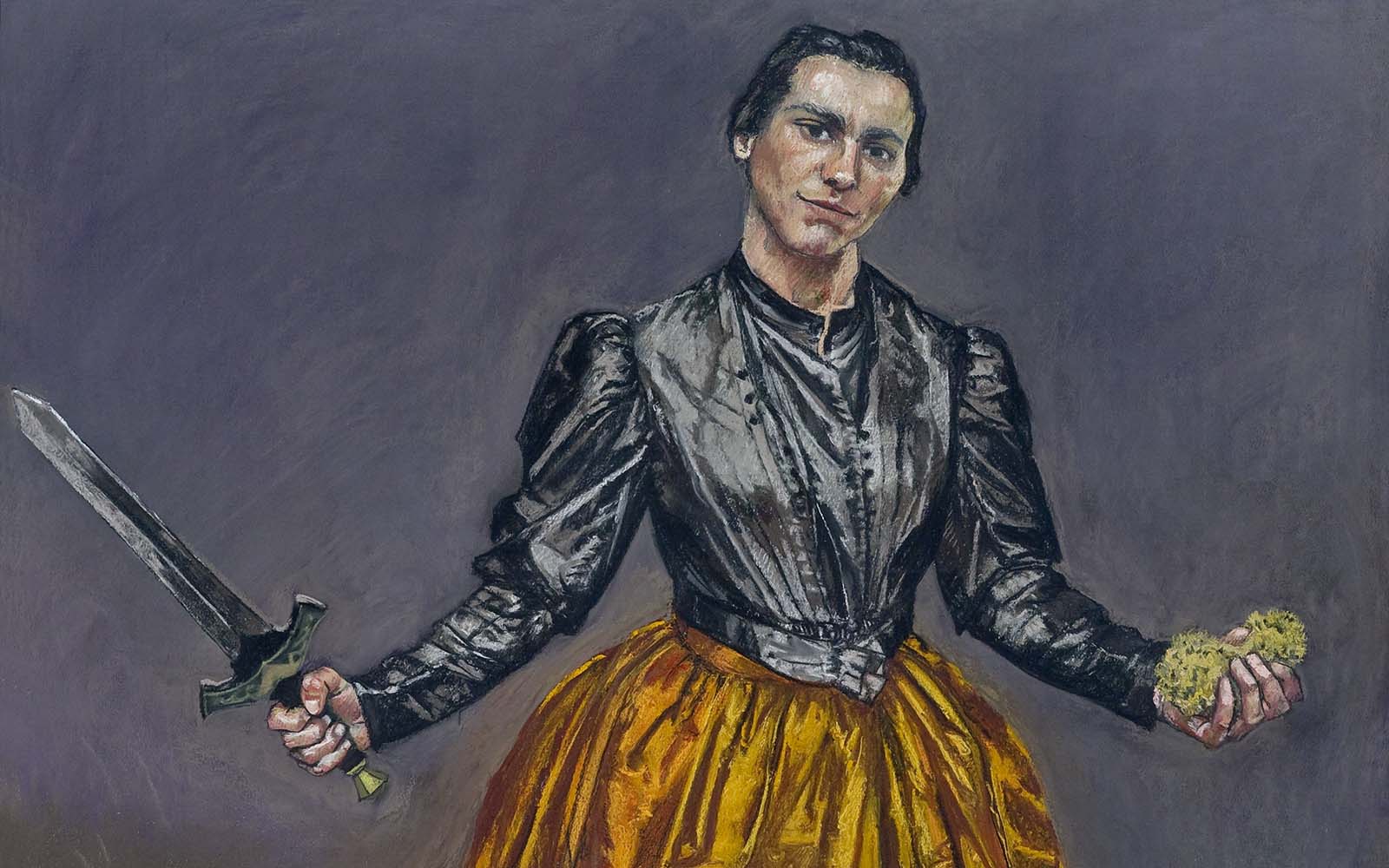Paula Rego (1935-2022)

The Board of Trustees recalls the historical link to the Gulbenkian Foundation of ‘an artist without parallel on the international art scene, who leaves behind an unforgettable legacy,’ also expressing ‘pride at the recent acquisition of her iconic painting Angel.’ In February, the CAM Collection was enhanced by the acquisition of two works – Angel and Turkish Bath – making the Foundation the private institution with the most sizeable and significant collection of the artist’s work, comprising 37 pieces, including painting, drawing and printmaking. At the time, Paula Rego expressed her ‘great joy’ at knowing that two of her most significant paintings ‘will live in the Gulbenkian.’ She had always made a point of emphasising her gratitude since her days as a Foundation grant holder.
Paula Rego’s death has happened at a key moment in terms of her international recognition, following the great media success of her exhibitions in Paris (Orangerie, 2018/2019), London (Tate Britain, 2021) and at the Kunstmuseum den Haag (2021/2022). An exhibition of her work opened recently at the Museo Picasso Málaga, and she has special representation at this year’s Venice Biennale. She is also currently part of the exhibition All I Want. Portuguese Women Artists from 1900 to 2020, in Tours.
United by the coherence and consistency of themes and the unmistakeable mark of her identity, Paula Rego’s work – from the late 1950s, still a student at Slade School, until the present day – has experienced a compulsive need to renew itself formally, with various identifiable and temporally defined cycles.
She is known for her tireless quest for themes that lead her to the representation of human drama (or comedy) in the implacable scrutiny of its complex ethical and moral nature. There could be none better than Paula Rego to clarify, with disarming simplicity, the thematic context of her work, which, in the multiple forms it takes, has been invariable, as we can read in her words: ‘Ordering people about. Obedience. Subversion. Doing good to bad people, doing harm to good people. Power. Inequality between the sexes. Men generally order women about. Sometimes women give the orders, but in a different way. The relationship between the sexes. That’s it. Nothing else is needed.’ Her approach is always ethical, pedagogical and with the intention of transforming perceptions and behaviours.
Born on 26 January 1935, in Lisbon, Paula Rego studied in London at Slade School of Art between 1952 and 1956. She married the British painter Victor Willing in 1956. She exhibited at the Gulbenkian Foundation’s II Exhibition of Plastic Arts (1961) and in 1961/1962 received a study grant from the Foundation. She moved to London permanently in 1976. In 1988, the CAM organised a retrospective exhibition on the artist. The following year she was named Senior Fellow of the Royal College of Art and, in 1990, she became the first female artist to be named Associate Artist of the National Gallery. In 2012, she exhibited at the French delegation of the Gulbenkian Foundation.
Among the many distinctions she received are the Portuguese insignias of Grand Officer of the Military Order of Saint James of the Sword and the Grand Cross of the Military Order of Saint James of the Sword.